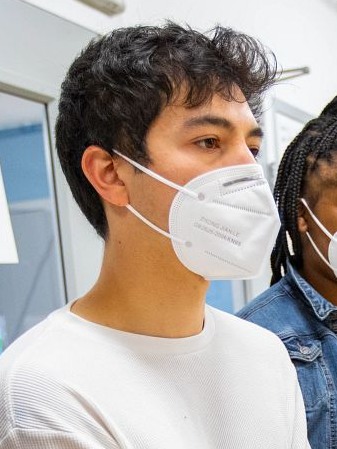PROVIDENCE, R.I. [Brown University] — “I, Robot.” “WALL-E.” “Ex Machina.” “The Matrix.” For decades, countless films and television shows have asked: What would happen if humans created robots that were so smart that they sought to replace their creators?
The question seems more eerily relevant every year, as scientists develop robots that are intelligent enough to drop fatal, precisely targeted bombs, carry on complex conversations and solve difficult math problems. Yet outside of movie theaters and scholarly communities such as Brown’s Humanity Centered Robotics Initiative, few are reckoning with the potential consequences of creating such advanced artificial intelligence.
Enter Sydney Skybetter, a senior lecturer in theatre arts and performance studies at Brown University. An experienced choreographer with an interest in artificial intelligence, Skybetter has long explored what human movement and performance can teach people about responsible robotics.
“More than ever, companies like Meta and federal agencies like the Transportation Security Administration are generating technologies that define how we exist in the world,” Skybetter said. “They say their technology can help us connect and keep us safe — on the other hand, we’ve already seen what happens when we give companies and agencies carte blanche to surveil us as they do, and we’ve seen what violence this technology can inflict both at home and abroad. I think artistic inquiry can help us understand and critique these emerging technologies — not only that, but it can also confer on these technologies a much-needed humanist core.”
In Spring 2022, alongside computer science Ph.D. candidate Eric Rosen and Class of 2021 graduate Madeline Morningstar, Skybetter sought to humanize robotics via a course called Choreorobotics 0101. The course, co-taught by Skybetter and Rosen and managed by Morningstar, drew interest from a diverse mix of students with experience in computer science, dance, theater and engineering.
On the surface, the course’s objective was straightforward: Learn how to choreograph a 30-second dance using one of two pairs of Spot robots designed by the robotics company Boston Dynamics.
Yet beneath the shiny spectacle of making the robots dance, there was a lot more to unpack. Through a mix of time spent in the dance studio, in the robotics lab and in engaging discussions, students explored the kinds of tough and important questions they may confront in their careers: What are robots for, anyway? How can they improve peoples’ lives? And how can roboticists ensure their creations aren’t used to exploit or hurt people?






